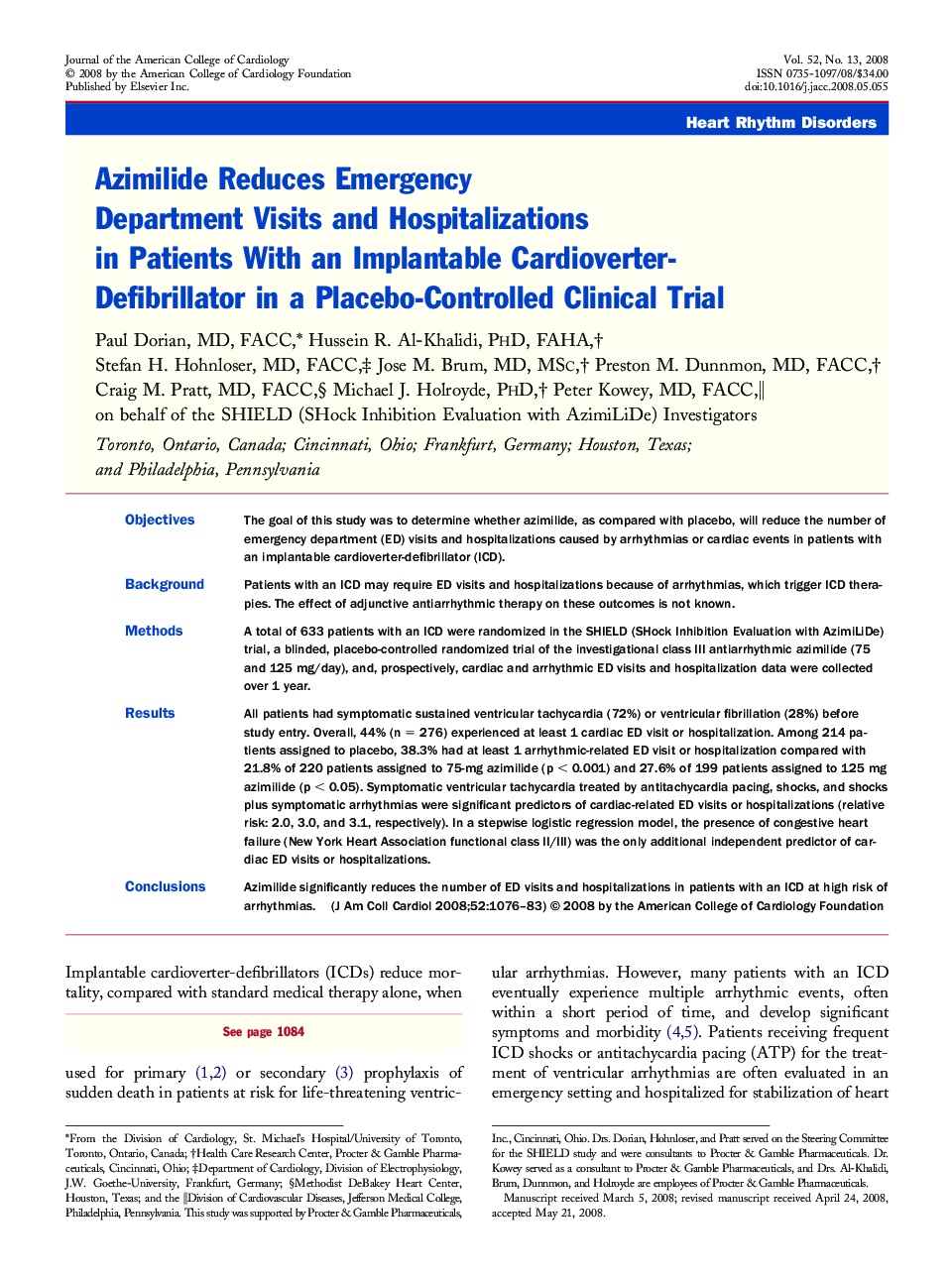| Article ID | Journal | Published Year | Pages | File Type |
|---|---|---|---|---|
| 2952658 | Journal of the American College of Cardiology | 2008 | 8 Pages |
ObjectivesThe goal of this study was to determine whether azimilide, as compared with placebo, will reduce the number of emergency department (ED) visits and hospitalizations caused by arrhythmias or cardiac events in patients with an implantable cardioverter-defibrillator (ICD).BackgroundPatients with an ICD may require ED visits and hospitalizations because of arrhythmias, which trigger ICD therapies. The effect of adjunctive antiarrhythmic therapy on these outcomes is not known.MethodsA total of 633 patients with an ICD were randomized in the SHIELD (SHock Inhibition Evaluation with AzimiLiDe) trial, a blinded, placebo-controlled randomized trial of the investigational class III antiarrhythmic azimilide (75 and 125 mg/day), and, prospectively, cardiac and arrhythmic ED visits and hospitalization data were collected over 1 year.ResultsAll patients had symptomatic sustained ventricular tachycardia (72%) or ventricular fibrillation (28%) before study entry. Overall, 44% (n = 276) experienced at least 1 cardiac ED visit or hospitalization. Among 214 patients assigned to placebo, 38.3% had at least 1 arrhythmic-related ED visit or hospitalization compared with 21.8% of 220 patients assigned to 75-mg azimilide (p < 0.001) and 27.6% of 199 patients assigned to 125 mg azimilide (p < 0.05). Symptomatic ventricular tachycardia treated by antitachycardia pacing, shocks, and shocks plus symptomatic arrhythmias were significant predictors of cardiac-related ED visits or hospitalizations (relative risk: 2.0, 3.0, and 3.1, respectively). In a stepwise logistic regression model, the presence of congestive heart failure (New York Heart Association functional class II/III) was the only additional independent predictor of cardiac ED visits or hospitalizations.ConclusionsAzimilide significantly reduces the number of ED visits and hospitalizations in patients with an ICD at high risk of arrhythmias.
